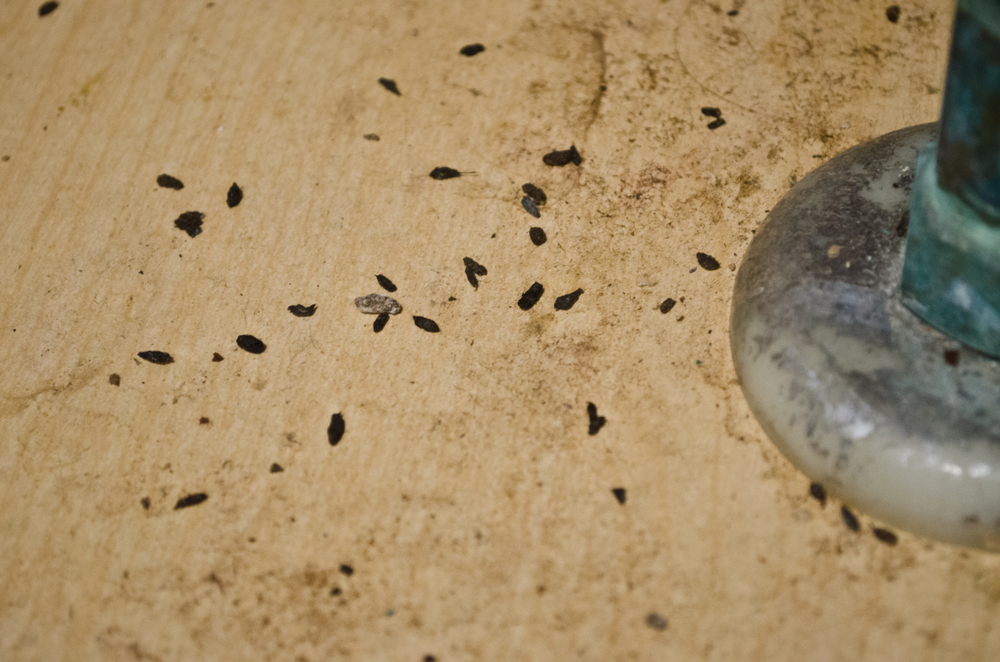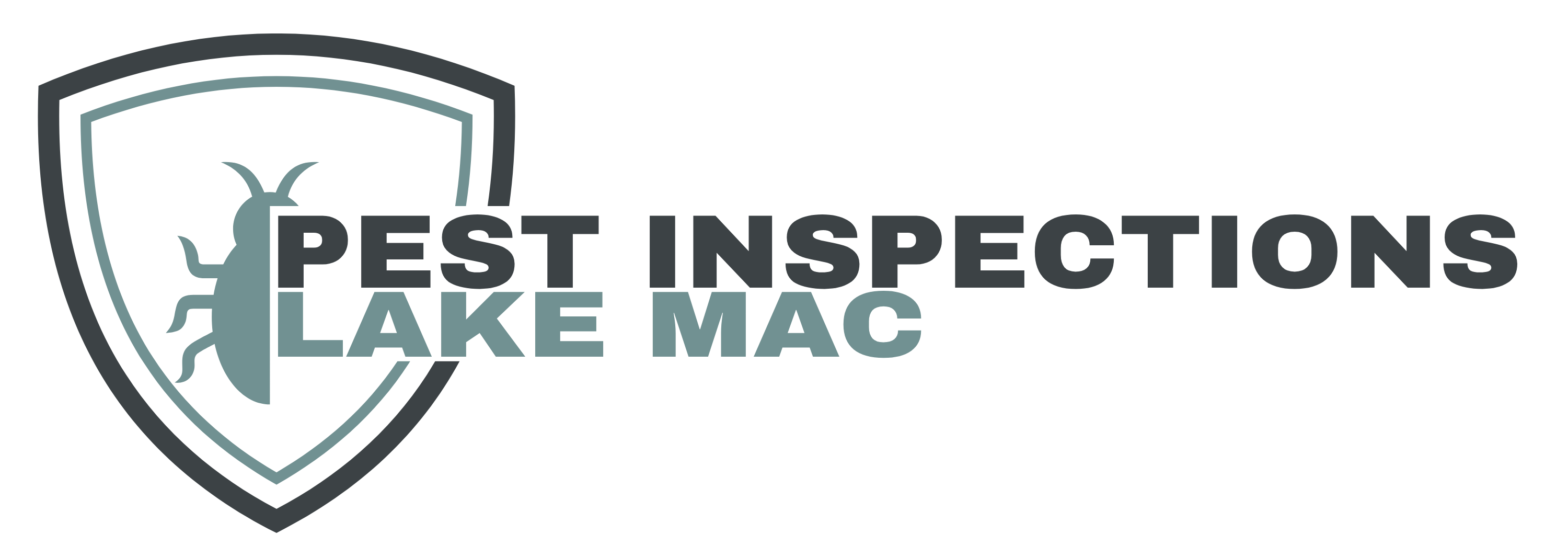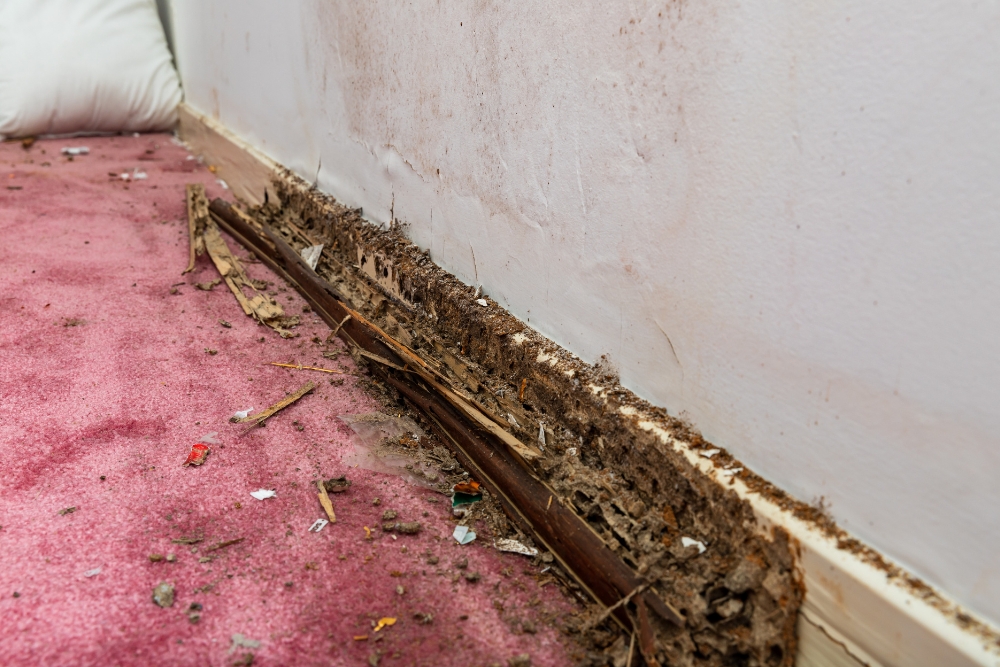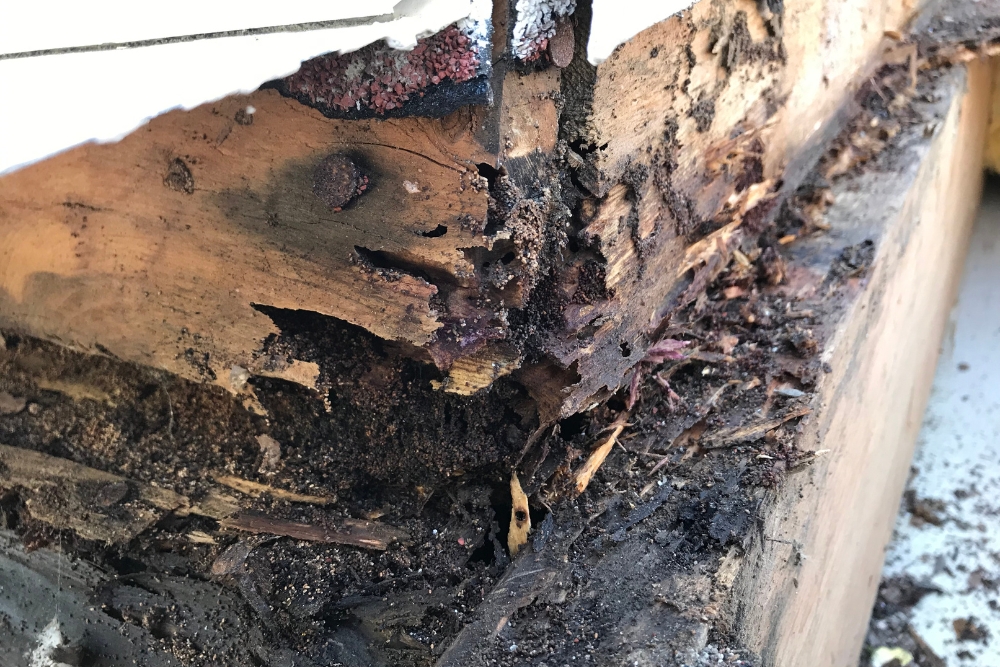Discovering pests like ants, mice, and moths in our kitchens can be a distressing experience. These unwelcome visitors not only pose a threat to our food supplies but can also harm our health by spreading diseases. In Australia, keeping these pests out of our homes is crucial for both comfort and safety. Sealing off gaps and cracks stands as a top method to prevent these critters from entering in the first place.
Additionally, maintaining cleanliness in our kitchens and pantries significantly reduces the allure for pests such as cockroaches and flies that are drawn to food leftovers and spills. Using airtight containers to store food effectively thwarts invasions by ants and other pests on the lookout for their next meal. Being vigilant about early signs of pest presence, including rodent droppings or the sudden appearance of spider webs, can help us tackle infestations before they balloon into larger problems.
At times when we find ourselves facing signs of these uninvited guests, turning to professional pest controllers ensures swift action against them. In this article, we explore various common kitchen pests ranging from rodents like mice and rats to insects such as spiders, termites, ants, bed bugs, cockroaches, flies, and mosquitos.
We delve into understanding signs of an infestation which include finding holes in food packaging or spotting damages inflicted upon wooden structures. Moreover, we discuss strategies on how homeowners can fortify their spaces against such threats through regular cleaning routines, and proper storage methods, and why seeking help from experts becomes indispensable under certain circumstances. Get ready for some eye-opening insights!
Key Takeaways
- Sealing off gaps and cracks is a top method to stop ants, mice, and moths from sneaking into your kitchen.
- Regularly cleaning your kitchen and pantry helps keep pests like cockroaches and flies away.
- Storing food in airtight containers can prevent invasions by ants and other pests looking for a snack.
- Early detection of pest signs such as rodent droppings or spider webs is key to stopping infestations before they spread.
- If you spot signs of pests, getting help from professional pest controllers can quickly address the problem.
Common Kitchen Pests
Common kitchen pests, such as rodents like mice and rats, along with spiders, termites, ants, bed bugs, cockroaches, flies, and mosquitoes, present more than just a nuisance—they represent a significant threat to kitchen hygiene and food safety. These pests are known to carry various pathogens and bacteria, which can easily contaminate food surfaces and foodstuffs, leading to foodborne illnesses.
Furthermore, some, like termites, can cause structural damage to your kitchen and pantry, potentially leading to costly repairs. Ants and cockroaches, in particular, are attracted to food residues, emphasising the importance of maintaining cleanliness to prevent infestations.
Addressing these pests promptly and taking preventative measures are crucial steps in ensuring your kitchen remains a safe and hygienic space for food preparation.

Rodents
We understand the frustration that rodents, specifically mice and rats, can cause in Australian homes. These pests have a knack for sneaking into kitchens through tiny gaps, searching for food and shelter.
They pose not just a nuisance but also a health risk by contaminating food supplies and surfaces with their droppings. Identifying and controlling these rodents quickly is crucial to prevent an infestation.
Our team recommends keeping your kitchen clean and storing food in rodent-proof containers as effective prevention methods. Inspect your home for any cracks or holes that might serve as entry points for these persistent pests.
Sealing off these entrances can significantly reduce the chances of mice and rats making themselves at home in your kitchen spaces. Regular pest inspections also play a vital role in catching early signs of rodent activity, ensuring your kitchen remains free from these unwelcome guests.
Spiders
Spiders spin webs to catch their prey, so finding spider webs in your kitchen could indicate a potential pest problem. Spiders are beneficial for controlling other insect populations, but their presence may suggest that there are enough insects in the area to sustain them.
Regularly cleaning and dusting corners and windowsills can help deter spiders from making themselves at home in your kitchen.
When it comes to managing spiders, keeping other pests under control is key. As part of our pest management services, we can provide tailored solutions to address any spider issues you may be facing.
Termites
Termites are a serious concern for homeowners, as they can cause significant damage to wooden structures and furniture. Regular inspection of the foundations and wooden components is crucial in identifying termites early.
Look out for mud tubes, hollow-sounding wood, and discarded wings near windowsills or doors. If you suspect a termite infestation, contacting a pest control professional familiar with Australian pest management is essential.
Preventing termite infestations involves keeping moisture away from your home’s foundation, inspecting firewood before bringing it indoors, and sealing off entry points like cracks and crevices.
Ants
Ants are a common kitchen pest that can invade your home in search of food and water. They leave behind trails of pheromones to communicate with other ants, leading to infestations. Ants can contaminate food and cause property damage. It is important to identify and address ant infestations promptly to prevent further issues.
Regularly inspecting and sealing off entry points, keeping surfaces clean and free of food particles, as well as promptly addressing any spills or crumbs, are essential steps in preventing ants from colonising your kitchen. Additionally, storing food in sealed containers will help deter these pests from invading your pantry. By taking proactive measures against ants, you can maintain a pest-free kitchen environment for you and your family.
Bed bugs
Bed bugs are small, reddish-brown insects that can infest various areas of a home. These pests have oval-shaped bodies and feed on the blood of humans and animals, typically at night. Detecting bed bug infestations early is crucial to prevent their spread throughout the house.
Taking proactive measures such as regularly inspecting mattresses, upholstery, and cracks in furniture can help identify these pests before they become a widespread issue. If an infestation is suspected, professional pest control experts like Pestech can provide thorough inspections and effective treatment plans tailored to eliminate bed bugs from your home.
Cockroaches
Cockroaches are common kitchen pests that can be identified by their oval-shaped bodies and long antennae. They are often found in warm, dark areas such as behind appliances or in cracks and crevices.
Cockroaches can contaminate food and surfaces, spreading bacteria and causing allergic reactions in some people. To prevent infestations, it’s important to keep the kitchen clean, store food properly, and seal off entry points to the home.
Regular inspections for signs of cockroach activity can help detect problems early on.
Flies
Flies can quickly become a nuisance in the kitchen, especially during warm weather. They are attracted to food and organic waste, making them a common problem for homeowners. To prevent flies from infesting your kitchen, ensure all food is tightly sealed and stored properly.
Regularly empty your rubbish bins and clean up any spills to eliminate potential breeding grounds for flies. Installing screens on windows can also help keep these pests out.
If you spot an increase in fly activity despite taking preventive measures, it may be necessary to contact a pest control professional who specialises in managing fly infestations.
Mosquitos
Mosquitos breed in standing water, and it’s vital to monitor for any stagnant water sources around the home. Regularly check gutters, bird baths, and other potential breeding spots.
Using insect repellent with DEET and ensuring window screens are intact can help keep mosquitos at bay. Standing water should be drained or removed as a preventive measure against these pesky pests.
Signs of Pest Infestation

When attempting to assess if your home has become a haven for pests, being vigilant about specific indicators is crucial. Rodent droppings, often found along baseboards, inside cabinets, or in hidden corners, can signal an unwelcome rat or mouse infestation.
Similarly, signs of chewing and gnawing on furniture, wires, or even the edges of walls point towards these furry invaders marking their territory and sourcing materials for their nests. Furthermore, discovering holes in food packaging is a clear indicator of rodents trying to access your stored goods, compromising food safety.
Additionally, the presence of spider webs, particularly in less frequented corners, or any damage to wooden structures—be it from termites or carpenter ants—should raise immediate concern, necessitating a thorough pest control intervention to protect your home’s integrity and health.
Rodent droppings
Rodent droppings can indicate a potential infestation, appearing as small, dark pellets. These droppings are typically found near food sources and nesting areas. If you notice these droppings in your kitchen or pantry, it’s essential to act quickly to prevent further pest activity. To safely clean rodent droppings, use gloves and a disinfectant spray to minimise the risk of disease transmission.
It is crucial to address rodent droppings promptly and take measures to eliminate the underlying issue for sanitary reasons. Proper disposal of contaminated items and thorough cleaning can help maintain a healthy living environment free from pests such as mice and rats.
Signs of chewing or gnawing
Look for small, parallel grooves on wooden surfaces or gnawed holes in food packaging. Chewing marks may also be visible on electrical wires and cables. Keep an eye out for any sawdust-like material near the chewing sites as well.
Inspect wooden areas and food storage spaces regularly to catch these signs early. Prompt identification can help prevent further damage and control infestation.
Holes in food packaging
Inspect food packaging for any signs of holes, as they can indicate the presence of pests. If you notice small openings or tears in your food containers, it’s crucial to investigate further to identify and address the issue promptly.
These openings provide easy access for pests such as ants, beetles, moths, and other pantry pests that can contaminate your food supply. Regularly checking for holes in food packaging is essential in preventing infestations and maintaining a pest-free kitchen environment.
Ensure that all stored food items are properly sealed in airtight containers to minimise the risk of attracting pests through these vulnerabilities. This simple step can significantly contribute to safeguarding your kitchen from unwanted insect intrusions while also promoting good hygiene practices within your home.
Presence of spider webs
Spider webs in the kitchen are a clear indication of a spider infestation. These sticky, silken structures can be found in dark corners, behind cabinets, and underneath appliances.
Regularly checking for the presence of spider webs is important to maintain a pest-free environment in your home. If you notice an increase in the number of spider webs, it may be time to take action by contacting a professional pest control service.
Keeping the kitchen clean and clutter-free will also help minimise areas where spiders can build their webs.
Damage to wooden structures
Inspect wooden structures for signs of damage, such as sawdust or small holes. Look closely at walls, floorboards, and furniture for any indications of pest activity. Termites can cause significant harm to wooden infrastructure and are often hard to detect until serious destruction has occurred.
Regularly checking for these telltale signs can help prevent costly repairs in the future.
Keep an eye out for tiny piles of coarse wood shavings near skirting boards and other wooden areas. These could be a sign of carpenter ants tunnelling through the wood. Prompt attention to damage is crucial in preventing further deterioration.
How to Prevent Kitchen Pests
Preventing kitchen pests requires a multifaceted approach to ensure your cooking space remains clean and uninviting to unwanted visitors. Storing food in airtight containers is one of the most effective measures, as it not only keeps food fresh but also denies pests access to their food sources.
Regular cleansing of kitchen surfaces and floors eliminates crumbs and residue, which could otherwise attract pests like ants, cockroaches, and rodents. Additionally, installing chimney caps and ensuring that fireplace doors are securely closed can prevent pests from finding entry points into your home, while also minimising the risk of larger pests such as squirrels or birds nesting within.
To further bolster your defenses, regular inspection and cleaning of gutters are essential to prevent water accumulation which can attract pests and lead to infestations in and around your kitchen area. Through these preventive measures, you can maintain a kitchen that is both clean and pest-free.

Clean and seal off entrances
To prevent pests from entering your home, regularly clean and seal off entrances such as gaps around doors and windows. Use silicone caulking to seal small cracks and crevices, while installing door sweeps can help keep out pests like ants, mice, and moths.
Ensuring that entry points are properly sealed is crucial in preventing unwanted kitchen pests from gaining access to your home.
When it comes to pest prevention, taking simple steps such as cleaning and sealing off entrances can go a long way in keeping your kitchen free from infestations. Regular maintenance of entrance points helps create a barrier against common household bugs in Australia, ensuring they stay outside where they belong.
Regularly monitor and clean pantry and kitchen spaces
Keep pantry and kitchen spaces clean and tidy to deter pests. Store food in airtight containers to minimise attraction, regularly inspect for signs of infestation such as droppings, chewed packaging, or nests, and then promptly address any issues.
Wipe down shelves and surfaces with a mild detergent solution to eliminate crumbs, spills, and standing water that can entice pests. Regular monitoring and cleaning will help maintain pest-free kitchen areas.
Properly store food
Properly storing food is crucial in preventing kitchen pests. Use airtight containers to store dry goods, such as flour, rice, and cereal. Keep fruits and vegetables in the refrigerator to deter pests from feeding on them. Regularly clean up any spills or crumbs and avoid leaving pet food out overnight, as it can attract pests.
Ensure your pantry is well-organised, placing older items in front of newer ones to encourage rotation. Regularly check for expired items and discard them appropriately, ensuring that no crumbs or spills are left behind. Taking these steps will help minimise the risk of attracting unwanted pests into your kitchen, contributing to a healthier living environment for you and your family.
Install chimney caps and doors to fireplaces
Installing chimney caps and doors to fireplaces is a proactive measure in the fight against unwanted pests gaining entry into your home. Acting as physical barriers, they play a crucial role in blocking access for a variety of intruders, including insects and small animals, that might see your chimney or fireplace as an entry point or even a nesting space.
To guarantee their continued effectiveness as pest deterrents, it’s essential to conduct regular checks and perform necessary maintenance on these fixtures. Ensuring they are properly fitted, free of damage, and consistently operational not only helps in keeping pests out but also contributes to the overall safety and efficiency of your fireplace.
Regularly inspect and clean gutters
Regularly inspecting and cleaning gutters is vital in preventing water buildup, which can attract pests like mosquitoes and flies. By keeping gutters free of debris, you can help reduce potential breeding grounds for these insects.
Additionally, clogged gutters can lead to water seepage into the home, attracting moisture-seeking pests like ants and termites. Proper maintenance of gutters helps create an environment less hospitable to these unwanted visitors.
Homeowners who regularly inspect and clean their gutters contribute significantly to a pest-free household, ensuring that potential entry points are minimised. Building inspectors should emphasise the importance of well-maintained drainage systems during inspections, as this plays a key role in preventing kitchen pest infestations.
Contacting a Pest Control Professional

When the signs of a pest infestation become apparent in your home, reaching out to a pest control professional isn’t just a wise choice—it’s a necessary step towards reclaiming the safety and cleanliness of your living space. These experts are uniquely equipped with the knowledge and tools required for the proper identification of pests, which is crucial for determining the most effective treatment plan.
Their proficiency in handling the nuances of pest management means they can devise tailored solutions that target the specific type of pest infestation you’re dealing with, ensuring a thorough and effective eradication process.
Moreover, pest control professionals are adept at identifying potential entry points and vulnerabilities in your home and providing recommendations to prevent future infestations. By enlisting their help, you’re not only addressing the current problem but also taking proactive measures to safeguard your home against pests in the long run.
Importance of proper identification
Proper identification of kitchen pests is crucial for effective pest control. Identifying the specific type of pest infestation enables targeted treatment and prevention measures, resulting in more efficient and cost-effective solutions.
Accurate identification also allows for the implementation of tailored strategies to address the unique behaviours and characteristics of each pest, increasing the likelihood of successful eradication.
Professional assistance in identifying kitchen pests can provide homeowners, building inspectors, and pest inspectors with peace of mind. Pest control experts possess the knowledge and experience to accurately identify various pests, offering valuable insights into their habits and potential hiding spots within a property.
This expertise ensures that appropriate measures are taken to combat specific types of infestations effectively.
How a professional can help
Identifying the exact type of pest infesting your kitchen is crucial, and this is where a professional can help. A pest control expert can accurately identify the pests using their knowledge and experience.
They have access to specialised tools and techniques to locate hidden infestations across various surfaces in your home. With their expertise, they can develop a targeted treatment plan to eliminate the specific pests causing issues in your kitchen without wasting time or resources.
Pest control professionals also offer ongoing monitoring and preventive solutions tailored towards ensuring that pests do not return. Their services are designed to enhance the overall cleanliness and safety of your home, making it an inhospitable environment for pests.
Call Us!
Having acquainted yourself with the key indicators of typical kitchen pests, alongside the most effective preventive measures, you are now prepared to proactively defend your home against these uninvited intruders. Implementing regular pest inspections, along with consistent cleaning and meticulous food storage, stand out as practical actions that drastically lower the chances of pest invasions.
How do you plan to integrate these practices, including regular pest inspections, to shield your home from these pests? Adopting these tried-and-tested strategies not only promotes cleanliness but also cultivates a healthier living space for you and those you care about.
Through vigilance and adherence to these simple yet effective recommendations, achieving and maintaining a pest-free kitchen throughout the year becomes a tangible goal.




